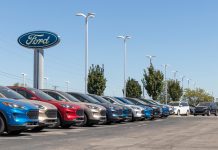We know that successful dealership operations primarily rely on strong vehicle sales, but manufacturers cannot produce enough cars to satisfy consumer demand. Today on Inside Automotive, Jessica Caldwell, Edmunds Executive Director of Industry Insights, provides an update on the current automotive market and shares her outlook on the rest of the year.
With the first half of 2022 behind us, the second quarter did slightly worse than the first in terms of overall sales pacing. However, market conditions are far from what car dealers are accustomed to. Supply chain delays and materials shortages are leaving dealers with a fraction of the inventory needed to meet robust consumer demand. In June, the SAAR (seasonally adjusted annual rate) was adjusted to around 13 million units. Until dealers can get their hands on more cars, prices will stay high and specific models will continue to be tough to find.
| Related: Navigating auto sales during persistent inventory shortages — David Kain |
With the lack of new vehicle inventory, used car sales boomed as a more affordable option. Although the average price for a used car is $33,341. This does not leave a ton of options for lower-income consumers who need a vehicle to work and get around their area.
Overall, it’s a mixed bag for car dealers. On one hand, the lack of inventory and supply chain bottlenecks have made it difficult for dealerships to serve their customers. On the other, dealers are reporting record profitability. However, Caldwell explains that inventory shortages are affecting dealers’ abilities to gain market share and establish life-long customer relationships.
Consumers have been used to paying under stick price, or MSRP, for a vehicle. But now, the paradigm has shifted. Some models are now going for tens of thousands above MSRP. Customers who ordered their vehicle online, are having to wait months sometimes for the vehicle to be delivered. It’s not an ideal scenario, considering there’s no indication of an end in sight.
For the rest of 2022, Caldwell anticipates low inventory because of global parts shortages. She says that recovery will likely be slow, but conditions will improve eventually.
 Did you enjoy this interview with Jessica Caldwell? Please share your thoughts, comments, or questions regarding this topic by submitting a letter to the editor here, or connect with us at newsroom@cbtnews.com.
Did you enjoy this interview with Jessica Caldwell? Please share your thoughts, comments, or questions regarding this topic by submitting a letter to the editor here, or connect with us at newsroom@cbtnews.com.
Be sure to follow us on Facebook, LinkedIn, and TikTok.
While you’re here, don’t forget to subscribe to our email newsletter for all the latest auto industry news from CBT News.







